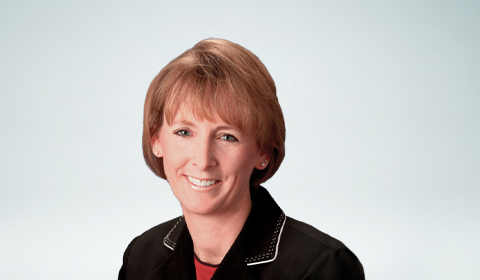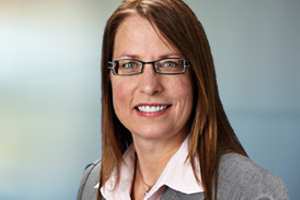Rod Serling has nothing on RGA’s Melissa Tilford and Mary Johnson. Serling, of course, was the unflappable host of the 1960s science fiction show The Twilight Zone, where he sonorously invited viewers to “enter a fifth dimension” and imagine new possibilities. As any fan of the show can tell you, these possibilities usually resulted in negative consequences for the protagonists.
In a recent RGA webinar, Tilford and Johnson argue that group underwriting requires a leap of imagination now more than ever, but that we need to take that leap prudently. Traditional occupations and industries are being disrupted by rapid technological change, yet U.S. group underwriters still rely on Standard Industrial Classification (SIC), a coding system for classifying industries that hasn’t changed since 1937. So how do we move forward without entering the Twilight Zone? We sat down with these two RGA experts to look into the future and consider the implications for insurers.
Getting the future right is hard work. Why do you think that the occupations of the future will be so different than those of today?
Start with Moore’s Law, the theory that computing power doubles every year, driving costs down. So far, this has proven true more or less, so if you do the math, in five years we will be 32x more advanced than we are today. If all this seems a little hard to take, consider the last decade: the disruption of metropolitan taxi systems by the online ride-hailing services Uber and Lyft; the transformation of the entertainment industry by digital streaming services like YouTube, Netflix, and Hulu; or the decline of traditional malls and brick-and-mortar retail with the rise of online shopping. Today, healthcare is embracing telemedicine, robotic surgery, and artificial intelligence. Education is delivered remotely through online universities. In farming, we’re looking at meat grown in a lab rather than in a field. We’re entering a fourth industrial revolution. According to one futurist, insurers might be underwriting for such occupations as a robotic mediator, drone traffic controller, virtual store manager or augmented reality designer; up to 85% of the jobs that a kindergartener today could hold haven't even been invented yet.
All of these positions sound less blue-collar and more gray or white-collar. Does that mean that blue-collar jobs are going to disappear – and what are the implications for insurers?
It does not necessarily mean blue-collar jobs are going to disappear. We are going to need skilled labor, but our plumbers and electricians are going to be specialists and supported by more technologies. Many labor jobs will become less physical and more technical, involving complex processes that require human interaction and greater judgment.
Consider the automation of transportation. Long-haul trucking is a blue-collar job, and underwriters are primarily concerned with motor vehicle accident risk, as well as lifestyle issues like high stress, fatigue, and low physical activity. This profession is also challenged by the arrival of driverless technology. Drivers may have misgivings about being replaced by driverless trucks, but initially, at least, it appears this new technology may improve safety and result in fewer emergency room visits and better driver health.
The human trucker will still need to be on board, but there may be periods when he or she can sit in the back of the cab and take a nap or watch a movie, and then if the weather gets bad, the driver might need to take over the controls.
During the early days, the technology isn't going to be perfect, but group insurers may write more AD&D insurance as a consequence. It is clear that this new automation could transform the workforce behind the wheels of big trucks.
Will technology help make substandard industries standard?
We’re not in a position to say that we should all now start aggressively reaching out to oil and gas or mining companies. Those industries give group insurers heartburn for good reason: accidents can be catastrophic. But we're hoping that the improvement of technology and the adoption of automation will, over time, reduce risk.
We recently learned of a major oil producer that deployed their first ever autonomous robot to visually inspect equipment for gas leaks in high-risk areas on a North Sea oil rig. This both reduces risk to workers and allows for more continuous monitoring. They're also implementing augmented and virtual reality training to better prepare workers and employing aerial drones to help monitor the facility in hard-to-reach areas. Many software companies are devoting themselves to streamlining existing processes, which will help reduce errors on the offshore platforms.
Similarly, with underground mining, where the industry is booming and hiring is way up, the risk of collapse is the chief concern. Technology very similar to that used in flight simulators is getting trainees up to speed faster; radio frequency identification technology is helping operators locate miners underground in case of emergency; and smart helmets are detecting carbon monoxide leaks. Robotics and autonomous vehicles provide additional assistance with rescues and make mining safer overall.
So what are the red flags that underwriters of the future will need to watch for?
The rise of the temporary or “gig economy” presents unique challenges. Technology is connecting remote independent contractors and freelancers with employers. Increasingly, we have virtual, rather than physical, workplaces. How do you then measure performance when you are not in the office working eight hours a day? We may need to look at the employee’s production rather than his or her hours. We are going to have to figure out how to reconcile more non-traditional employment and salary arrangements with traditional benefits structures – and to incorporate these concepts into predictive models. We’re going to see associations of freelancers who get together to purchase insurance and applicants who expect a more individualized, personalized insurance buying experience.
One company in Wisconsin offered to implant microchips in the hands of employee volunteers. Why? With just a wave of the hand, employees could do everything from login to computers to buy snacks in the break room. Who knows if a similar technology will someday help us track who is actively at work? Some day we might have an embedded electronic tattoo to track our activity and perhaps even our biometrics. We may also see “smart” or self-executing contracts that are triggered by certain events and produce automated claims applications.
You mention greater personalization. Explain what you mean.
We’re talking about demographic change. In the future, we're going to see more startups and freelancing, as the Millennials, Generation Y, and Generation Z (or the iGeneration) appear to be far more entrepreneurial and focused on services and experiences, and less interested in product manufacturing. Processes are likely to become more and more automated, leaving labor to focus more on improving the customer’s experience or journey.
This emphasis on people promises to fundamentally change the relationship between insurer and insured. Already, many carriers are focused on personalizing the purchasing process based on the life stage of the applicant. Is this a young family, a single individual, or an older couple nearing retirement? Increasingly, customers expect more specialized appeals, requiring the insurer to really understand the consumer’s personality and needs.
The balance of power has shifted away from institutions and toward individuals with the rise of social media; each customer now has an out-sized influence over public perceptions of a brand. One of the most interesting and potentially challenging trends is the rise of “social scoring,” or evaluations of how a carrier or individual workers are performing. We’re seeing this come into play, for example, with customers liking and disliking carriers on Facebook or submitting positive or negative reviews on Yelp.
Will this entrepreneurialism affect payouts or premiums?
It’s very likely there will be shifts in salary structures, with group insurers generating income from multiple sources and receiving premiums in new forms. For example, the payroll company ADP is exploring the use of crypto-currency as payment. Meanwhile, insurers are exploring blockchain, an online automated ledger that relies on real-time reconciliation, to reduce fraud and increase processing efficiency. Potential applications include better pricing and risk assessment at application time and faster claims processing.
Some carriers may question how big Silicon Valley ideas could be applied to a very traditional industry like insurance. How would you respond?
Some of the signs of disruption to industries and occupations are already visible, while others are still emerging. But one thing is undeniable: Technological advances are allowing us to blend the physical, the digital, and the biological – it’s all starting to blur, affecting underwriting speed, scope, and systems. There’s really no way of avoiding this disruption. It’s a matter of embracing the challenge and figuring out how we as an industry are going to integrate these technologies into our risk evaluations.
We’re reminded of a quote by the inventor Charles Kettering: “We work day after day, not to finish things but to make the future better … because we'll spend the rest of our lives there.” In other words, underwriters will either innovate or end up in the Twilight Zone.




